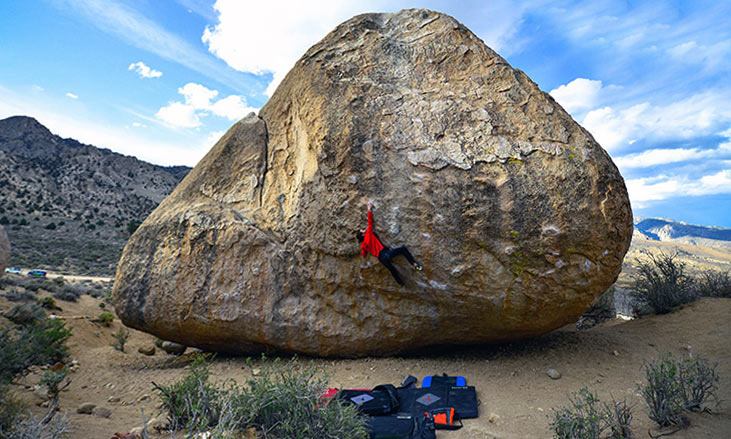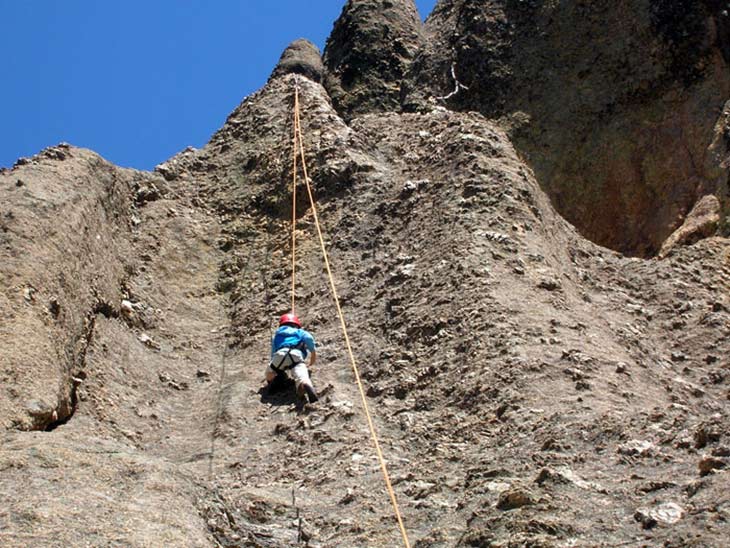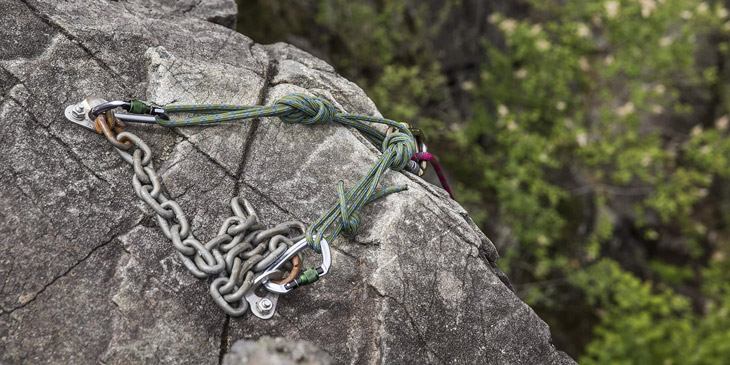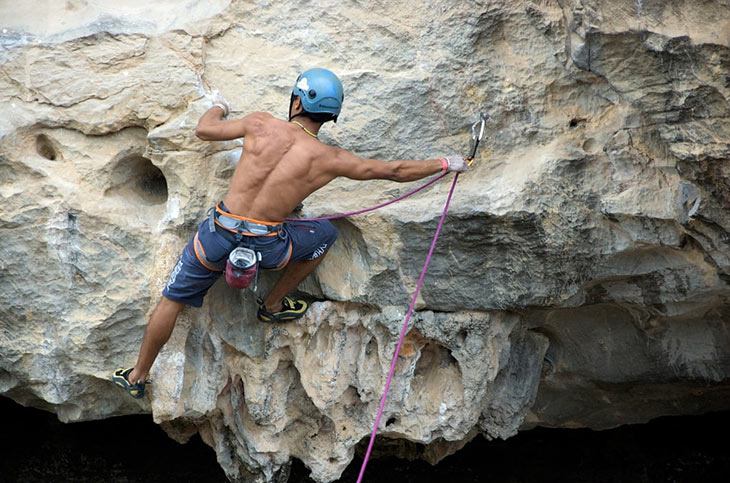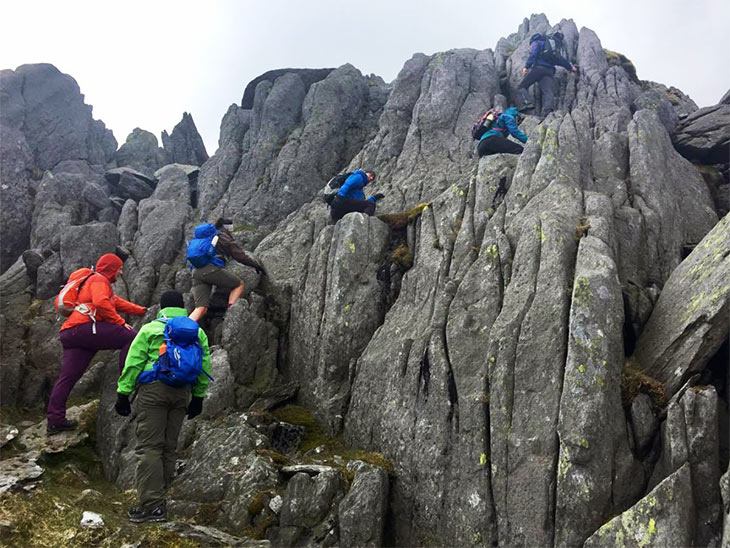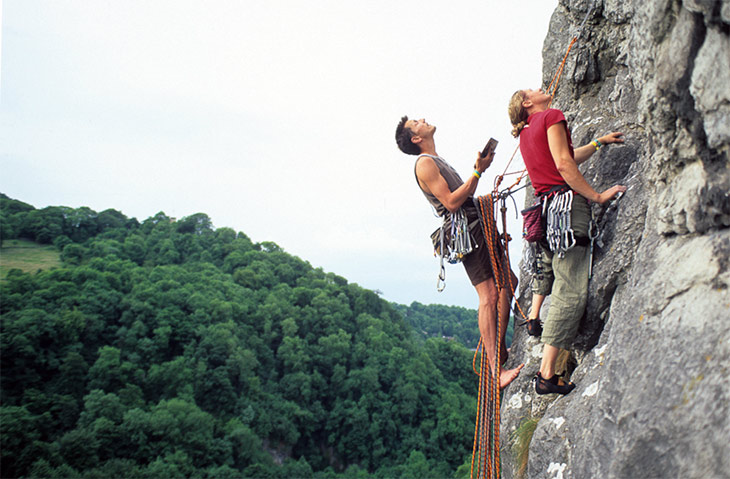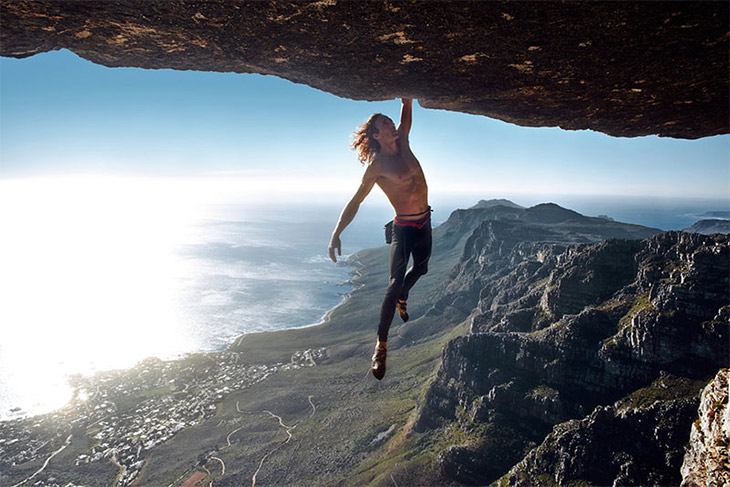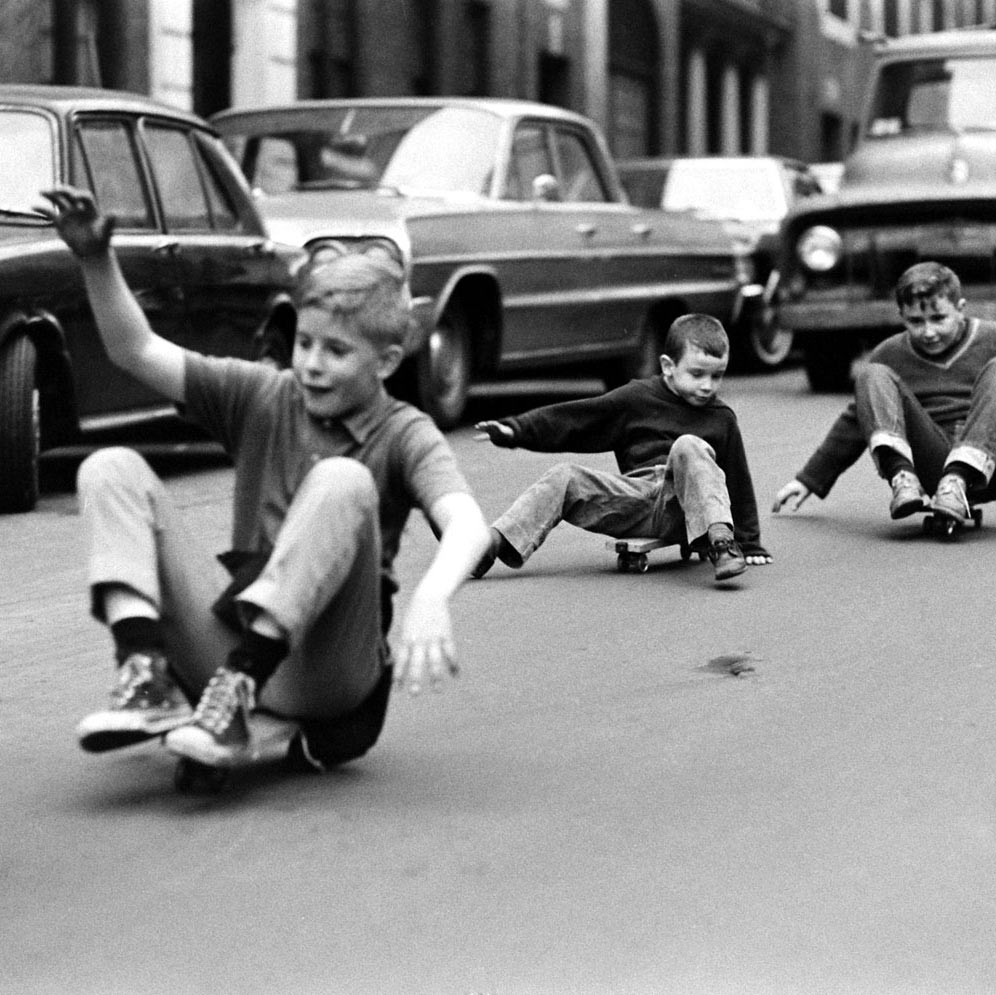Getting acquainted with rock climbing should happen in a friendly environment, minimizing stress and adrenaline (at least at the beginning). Ideally, start with lessons at an indoor climbing gym. Once the initial steps are taken, you can transition to natural outdoor settings.
Rock Climbing Styles and Types
Rock climbing can be done in dozens of ways, catering to every taste, fitness level, thrill factor, and age. My overview is meant to help beginners make a choice and guide them a bit on their journey of ascension :))).
Bouldering
This involves climbing without ropes (only crash pads are used) on small boulder-like rock formations or artificial equivalents in indoor climbing gyms. The favorite types of rock for this activity include granite with long cracks, textured sandstone, limestone, and volcanic formations.
The climber uses only climbing shoes, chalk for hand grip, and bouldering pads to cushion falls. The route stretches no more than 6 meters, making it relatively safe and a good training option. Bouldering focuses on developing finger strength and endurance.
This discipline is extremely popular worldwide, and since the 1990s, bouldering competitions have been held with rating systems developed specifically for the sport. Rock climbing was also featured in the 2020 Olympics in three categories. This sport fought hard for its place on the Olympic stage.
World-famous extreme climbers such as John Gill, Jason Kehl, and Alex Honnold have elevated bouldering into what’s known as “free soloing,” which we’ll discuss later. These climbers tackled vertical boulders over 16 meters high and with a difficulty of V16 without safety or equipment.
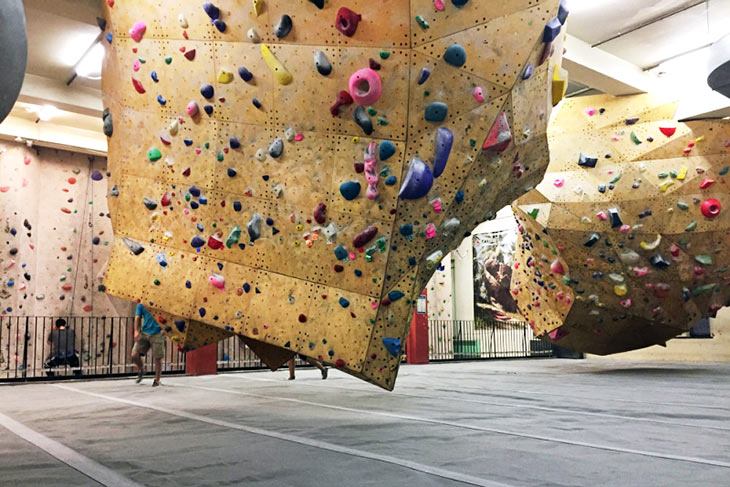 Artificial boulders in a climbing gym
Artificial boulders in a climbing gym
Man-made boulders made of concrete and plastic are very convenient for practicing the discipline as each hold is color-coded according to difficulty.
Buildering (Urban Climbing)
This is an exhilarating and dangerous form of industrial extreme sports. Climbers conquer the walls of buildings, bridges, and other human-made structures (including abandoned and decaying ones). Some climbs are practiced with safety equipment, but many are done without, often leading to legal issues. Nighttime buildering is particularly popular due to these legal concerns.
 Buildering climber Timothy Shief
Buildering climber Timothy Shief
The documented history of buildering begins in 1895 with Geoffrey Winthrop Young, a Cambridge student who published a guidebook on buildering at Trinity College (he released nine such publications).
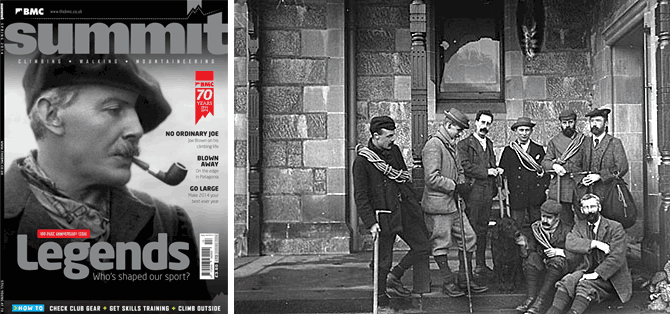 Geoffrey Winthrop Young and company
Geoffrey Winthrop Young and company
Prior to him, students had already been engaging in roof-climbing activities at universities and colleges, but it was Young who turned this pastime “official.” In the 1920s, buildering became particularly popular in the skyscraper capital of New York City.
Over 100 years of urban climbing, dozens of excellent guidebooks have been published, documenting ascents on the walls and rooftops of world-famous buildings. Notable names include Alain Robert (who climbed the Burj Khalifa), Dan Goodwin aka SpiderDan, George Willig, and others.
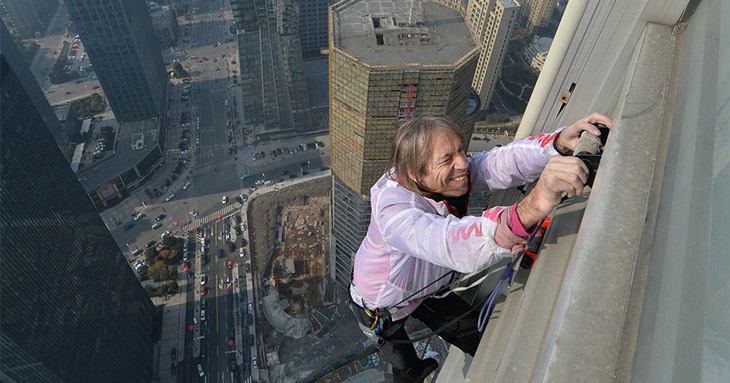 Alain Robert, a legend of urban climbing
Alain Robert, a legend of urban climbing
Competitions are held worldwide, and the first BUILDering World Championship was hosted in Germany in 2005.
There used to be a resource where users could add interesting climbing objects across Russia, but it was shut down. If you know of any similar websites, let us know in the comments.
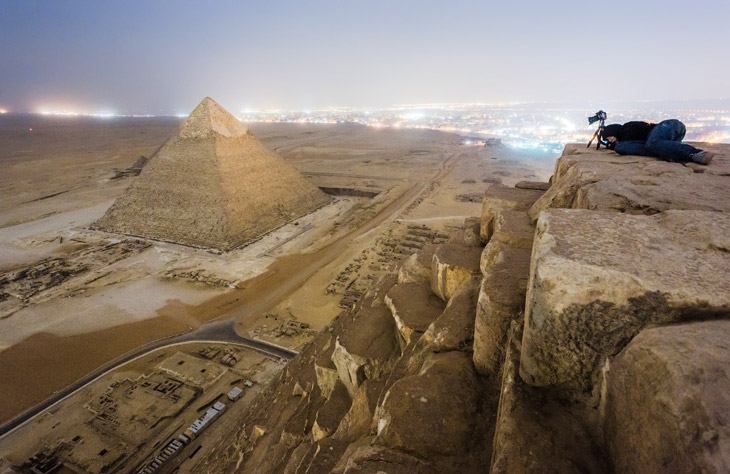 For such extreme buildering, you might end up with a hefty fine...
For such extreme buildering, you might end up with a hefty fine...
Top-roping
This is a climbing style where the climber is attached to a rope that runs through an anchor system from the start to the end of the route. In case of a slip, the climber is secured along the path at short intervals.
Top-roping allows you to tackle challenging routes by pre-setting anchors at the top (the summit or finish line). In simpler terms: you climb to the summit using hiking trails or scrambling, set up an anchor, thread the rope through it, and lower both ends of the rope down to the base of the climb.
Equipment for top-roping includes: an anchor, climbing static or low-stretch rope, carabiners, and slings for anchors. This style of climbing assumes a small amount of climbing experience, training in proper anchor setup, and working with equipment. Many climbers start specifically with top-roping within the bounds of a climbing gym.
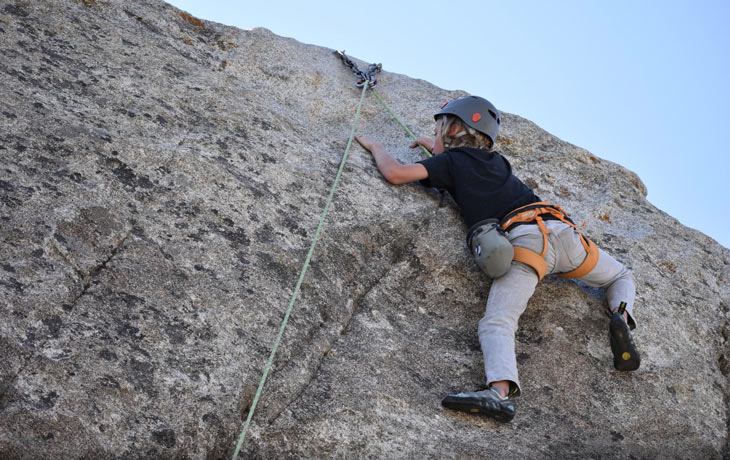 Top-roping training is suitable for beginners and even children
Top-roping training is suitable for beginners and even children
Lead climbing
In this climbing technique, there is always a belay partner, but there is no pre-installed anchor at the end of the route—lead climbing is less constrained than top-roping.
The belay in this style is from below—often placing a top belay is impossible, and in sport lead climbing, it’s simply “not competitive.”
Lead climbing is the next skill level after bouldering and top-roping. Climbing gyms often allow for practicing lead climbing skills with an automatic backup belay. The video below illustrates well how this is done at a climbing gym:
Scrambling
A type of easy climbing, an intermediate technique between mountain hiking and alpine climbing. A climb over rough terrain can be called scrambling when no special climbing equipment is used (or it’s used only in particular instances for safety).
In alpine scrambling, you won’t do without an ice axe, crampons, a helmet, and also knowledge about how to use them.
On the climbing difficulty scale, scrambling is rated as third class, or easy in the British Ashton system. There are guidebooks on scrambling with route descriptions and recommendations.
Multi-pitch
A climbing technique partnering with an experienced climber on a route divided into several pitches. Pitches are necessary stops along the route for leader changes in the team, setting up intermediate anchor points, resting, or even overnight stays.
Any route longer than the length of a single rope is referred to as a multi-pitch.
Typically, the first in the team is not necessarily a professional, with the leader of the group following after.
Solo climbing
Pure extreme sports. A climbing style in which the athlete does not use any belay, relying only on chalk for their hands. However, there are variations:
- Rope soloing—a minimal belay system in case of a fall, sometimes with autoblocking. If a solo climber uses a belay rope, they usually have to traverse sections of the route three times to remove intermediate anchors.
- Free solo climbing without any belay, but there might be a net below, or the climbing takes place above water, where a fall can be cushioned.
I hope this brief overview of the main climbing styles was inspiring. A beginner climber will have to learn many rules, but there is one first step that cannot be replaced—starting with a safe climbing gym and an experienced instructor nearby. Good luck!
